Search Result
Results for "
traumatic
" in MedChemExpress (MCE) Product Catalog:
1
Biochemical Assay Reagents
| Cat. No. |
Product Name |
Target |
Research Areas |
Chemical Structure |
-
- HY-119358
-
|
|
Reactive Oxygen Species
Apoptosis
|
Inflammation/Immunology
|
|
Traumatic Acid is a wound healing agent and a cytokinin (phytohormone). Traumatic Acid enhances the biosynthesis of collagen in cultured human skin fibroblasts. Traumatic Acid inhibits MCF-7 breast cancer cells viability and enhances apoptosis and oxidative stress. Traumatic Acid can be used in studies of cancer, circulatory disorders (including arterial hypertension), and skin diseases associated with oxidative stress and impaired collagen biosynthesis .
|
-
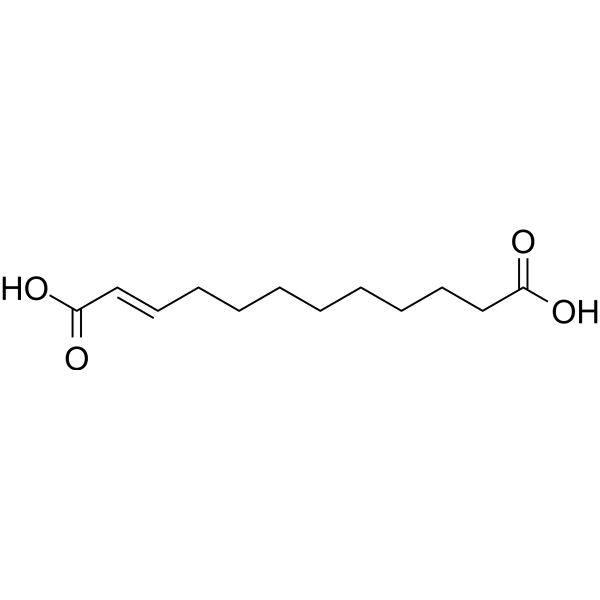
-
- HY-P2136
-
COG1410
1 Publications Verification
|
Apoptosis
|
Neurological Disease
Inflammation/Immunology
|
|
COG1410 is an apolipoprotein E-derived peptide and an apoptosis inhibitor. COG1410 exerts neuroprotective and antiinflammatory effects in a murine model of traumatic brain injury (TBI). COG1410 can be used for the research of neurological disease .
|
-
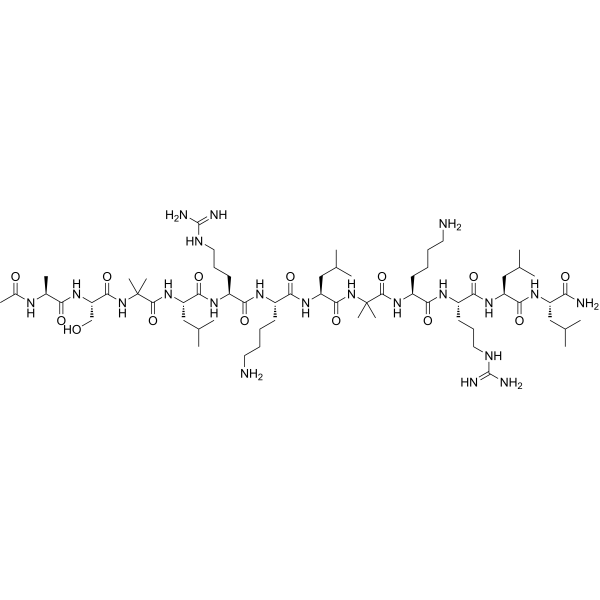
-
- HY-100904
-
|
2 BFI
|
Imidazoline Receptor
|
Neurological Disease
Inflammation/Immunology
|
|
RX 801077 hydrochloride (2 BFI) is a selective imidazoline I2 receptor (I2R) agonist with a Ki value of 70.1 nM. RX 801077 hydrochlorideshows anti-inflammation and neuroprotection. RX 801077 hydrochloride has the potential for the research of traumatic brain injury (TBI) .
|
-
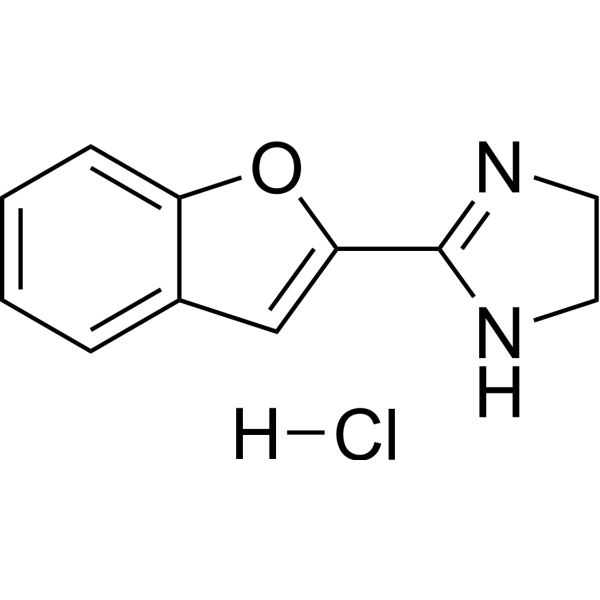
-
- HY-110029
-
|
BRL29060 maleate
|
Serotonin Transporter
|
Neurological Disease
|
|
Paroxetine maleate is a potent and selective inhibitor of SSRI. Paroxetine maleate is used in generalized anxiety disorder, post traumatic stress disorder, premenstrual dysphoric disorder and chronic headache research .
|
-
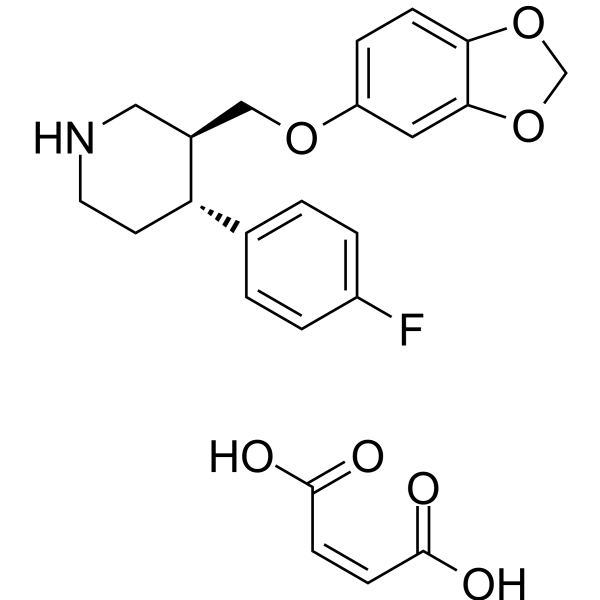
-
- HY-100904A
-
|
2 BFI free base
|
Imidazoline Receptor
|
Neurological Disease
Inflammation/Immunology
|
|
RX 801077 (2 BFI free base) is a selective imidazoline I2 receptor (I2R) agonist with a Ki value of 70.1 nM. RX 801077 shows anti-inflammation and neuroprotection. RX 801077 has the potential for the research of traumatic brain injury (TBI) .
|
-
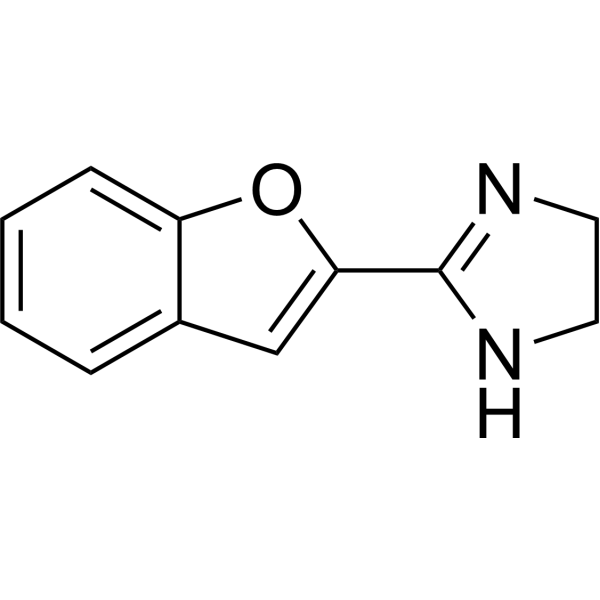
-
- HY-B0205
-
|
CV 11974
|
Angiotensin Receptor
PPAR
|
Cardiovascular Disease
Endocrinology
Cancer
|
|
Candesartan (CV 11974) is an orally active angiotensin II AT1-Receptor blocker and PPAR-γ agonist. Candesartan has potent and long-lasting antihypertensive effects. Candesartan can be used for the research of hypertension, chronic heart failure (CHF) and Traumatic brain injury (TBI) .
|
-
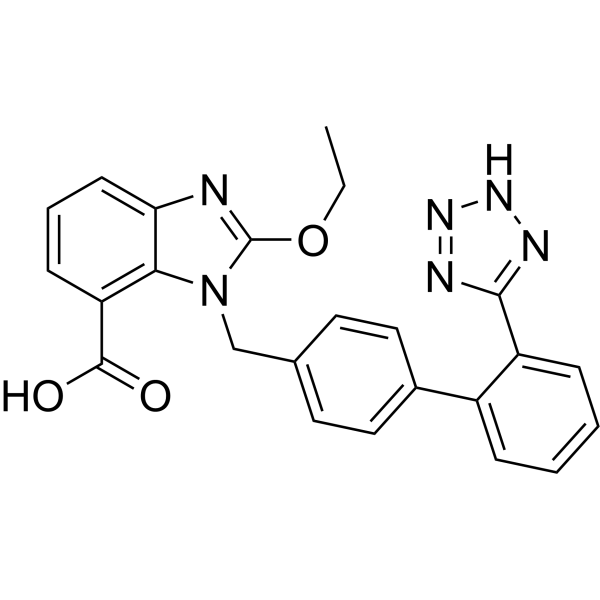
-
- HY-109509
-
|
PK 10169; Enoxaparin sodium; Lovenox
|
Factor Xa
Thrombin
SARS-CoV
|
Infection
Cardiovascular Disease
Neurological Disease
Inflammation/Immunology
|
|
Enoxaparin (PK 10169), a low-molecular-weight heparin (LMWH) derivative. Enoxaparin exerts anticoagulant activity through antithrombin III, an endogenous inhibitor of factor Xa and thrombin IIa. Enoxaparin protect the rat hippocampus against TBI (traumatic brain injury) via antioxidant and anti-inflammatory properties. Enoxaparin can be used for the research of deep vein thrombosis (DVT), pulmonary embolism, TBI and COVID-19 .
|
-
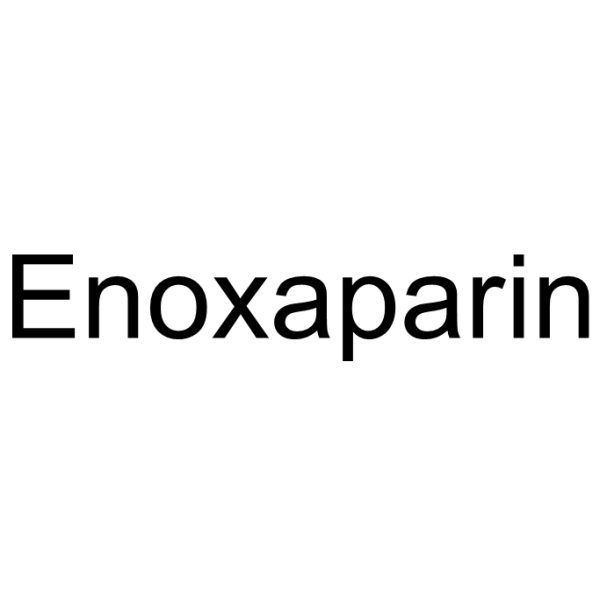
-
- HY-W002620A
-
-

-
- HY-B0985
-
|
|
TRP Channel
|
Neurological Disease
|
|
Phenazopyridine hydrochlorideis a competitive SARM1 inhibitor, with IC50 145 μM. Phenazopyridine hydrochlorideis a TRPM8 antagonist. Phenazopyridine hydrochloride has a local anesthetic/analgesic effect. Phenazopyridine hydrochlorideis used to relieve painful symptoms of conditions such as cystitis and urethritis. Phenazopyridine hydrochloridecan promote neuronal differentiation and can also be used in the study of traumatic brain injury, peripheral neuropathy and neurodegenerative diseases .
|
-
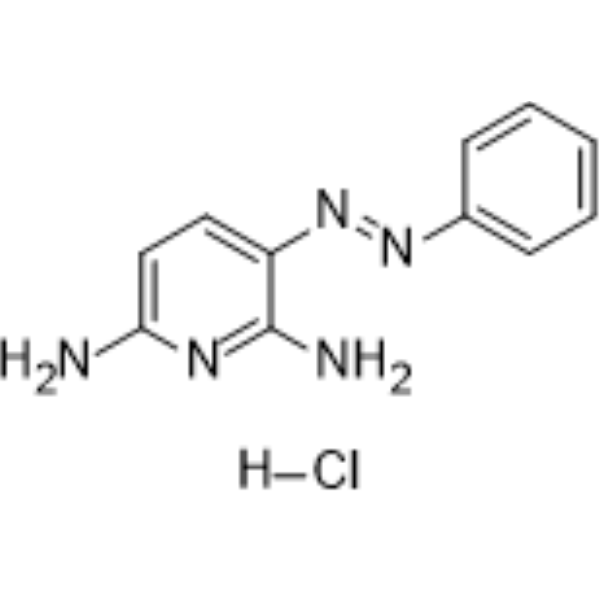
-
- HY-118352
-
|
|
HDAC
|
Neurological Disease
|
|
LB-205 is a pan-histone deacetylase inhibitor (HDACi). LB-205 can be used for the research of acute traumatic brain injury .
|
-
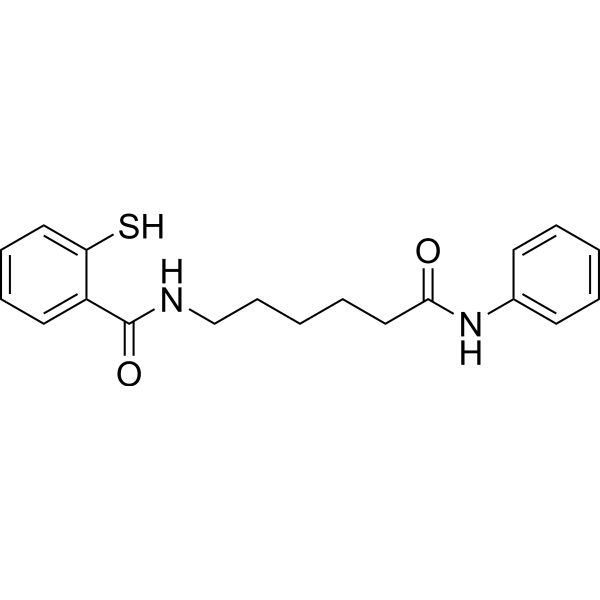
-
- HY-123863
-
|
|
FAAH
|
Neurological Disease
|
|
SSR411298 is an orally active, selective and reversible fatty acid amide hydrolase (FAAH) inhibitor. SSR411298 has the potential for post-traumatic stress disorder research .
|
-
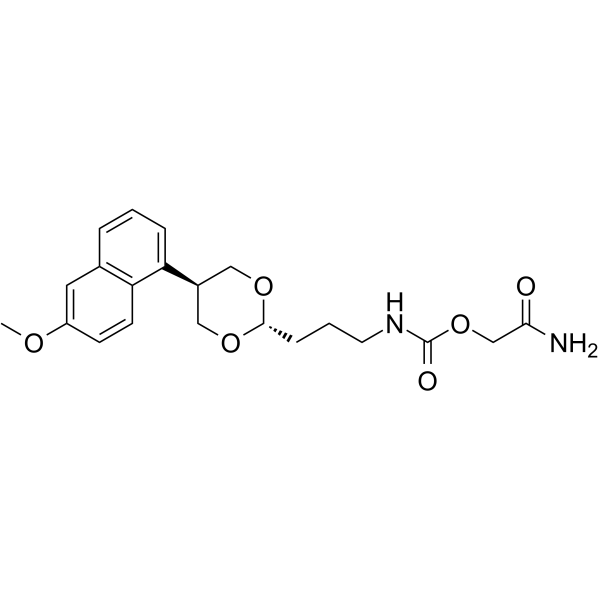
-
- HY-119953
-
|
|
mAChR
|
Neurological Disease
|
|
BIBN-99 is a selective, BBB-penetrable and competitive muscarinic M2 receptor antagonist. BIBN-99 improves cognitive performancein rats with traumatic brain injury .
|
-
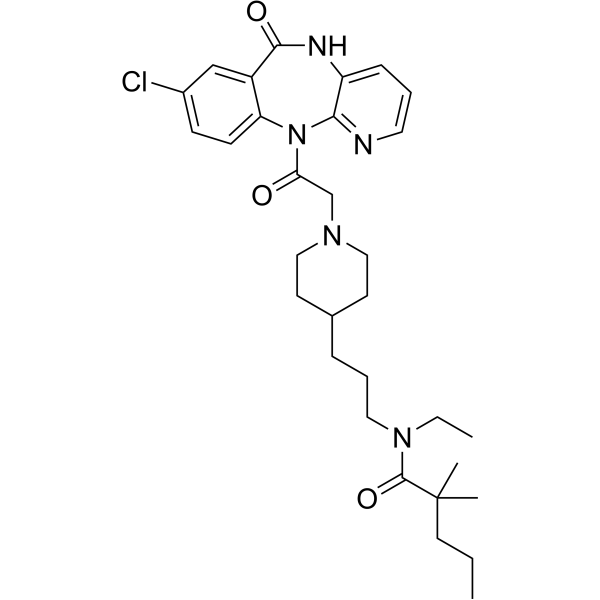
-
- HY-17455
-
|
CI-879 free base
|
Prolyl Endopeptidase (PREP)
|
Neurological Disease
|
|
Pramiracetam (CI-879 free base) is a PREP (prolyl endopeptidase) inhibitor. Pramiracetam improves cognitive impairment caused by traumatic brain injury. Pramiracetam can be used in the study of neurodegenerative diseases .
|
-
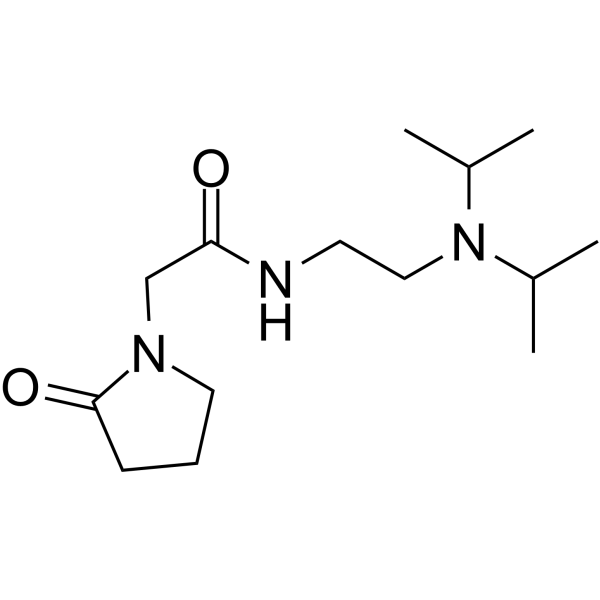
-
- HY-N4098
-
|
|
Apoptosis
|
Neurological Disease
|
|
Incensole acetate is a main constituent of Boswellia carterii resin, has neuroprotective effects against neuronal damage in traumatic and ischemic head injury. Incensole acetate reduces Aβ25–35-triggered apoptosis in hOBNSCs .
|
-
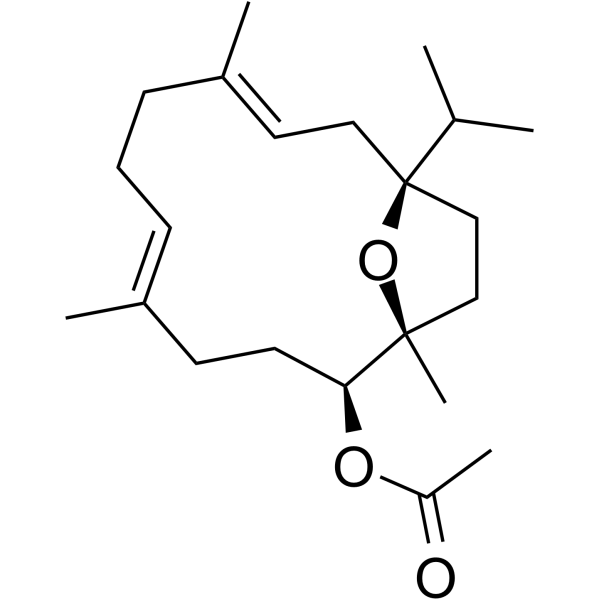
-
- HY-114986
-
|
6-keto-Prostaglandin E1
|
Endogenous Metabolite
|
Cardiovascular Disease
|
|
6-Keto-PGE1 (6-keto-Prostaglandin E1) is a bioactive derivative of PGE1. 6-Keto-PGE1 has hemodynamic and cytoprotective effects in traumatic shock .
|
-
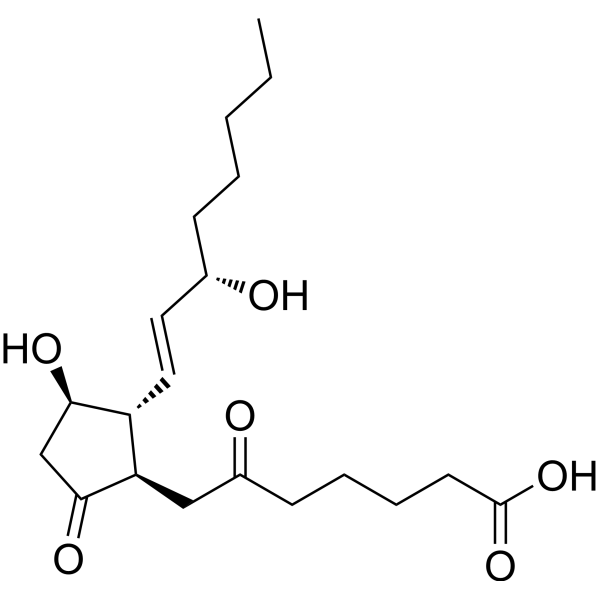
-
- HY-132845
-
|
PTC857
|
α-synuclein
|
Neurological Disease
|
|
Utreloxastat (PTC857) is a compound used for the research of the disorders including α-synucleinopathies, tauopathies, Amyotrophic lateral sclerosis (ALS), traumatic brain injury, and ischemic-reperfusion related injuries (patent WO2020081879A2, example A1) .
|
-
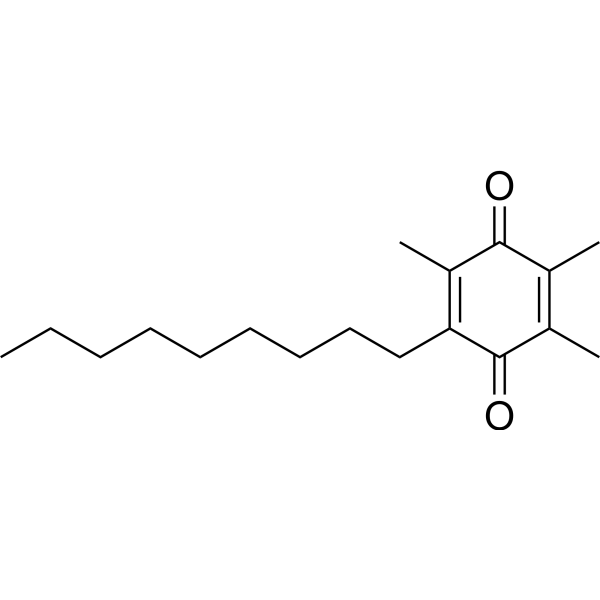
-
- HY-162359
-
-
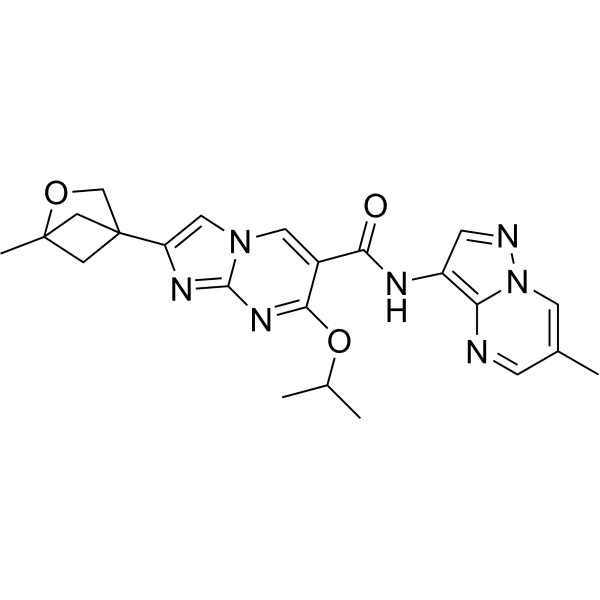
-
- HY-P2325
-
|
|
Biochemical Assay Reagents
|
Neurological Disease
|
|
Exoenzyme C3, clostridium botulinum is a promising agent to inactivate RhoA in neurons due to preventing the detrimental effect of active Rho in the recovery of injured neuronal systems. Exoenzyme C3, clostridium botulinum is used for the study of post-traumatic neuro-regeneration .
|
-
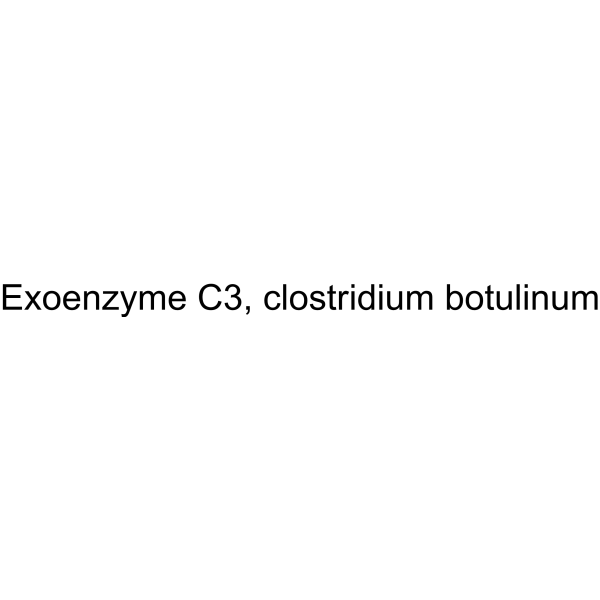
-
- HY-124607B
-
BRD3731
1 Publications Verification
|
GSK-3
|
Neurological Disease
Metabolic Disease
|
|
BRD3731 is a selective GSK3β inhibitor, with IC50s of 15 nM and 215 nM for GSK3β and GSK3α, respectively. BRD3731 is potentail for the research of post-traumatic stress disorder (PTSD), psychiatric disorder, diabetes, and neurodegenerative disorders .
|
-
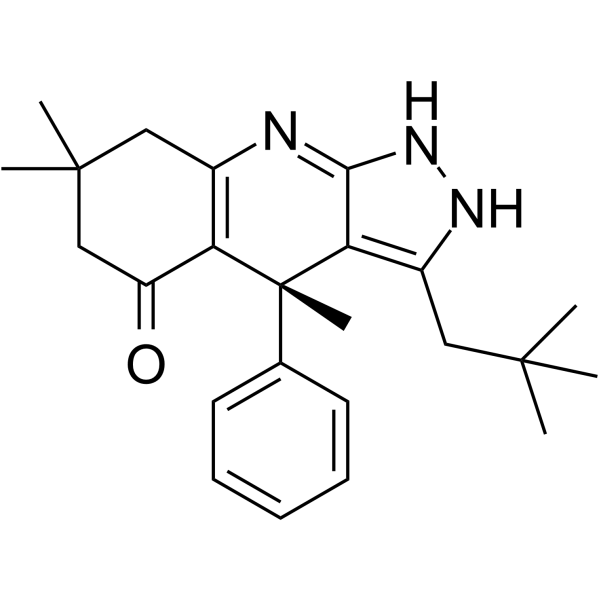
-
- HY-153458
-
|
|
Orexin Receptor (OX Receptor)
|
Neurological Disease
Metabolic Disease
|
|
Orexin receptor modulator-1 is an orexin receptor modulator. Orexin receptor modulator-1 can be used for the research of substance addiction, panic disorder, anxiety, post-traumatic stress disorder, pain, depression, seasonal affective disorder, an eating disorder, or hypertension .
|
-
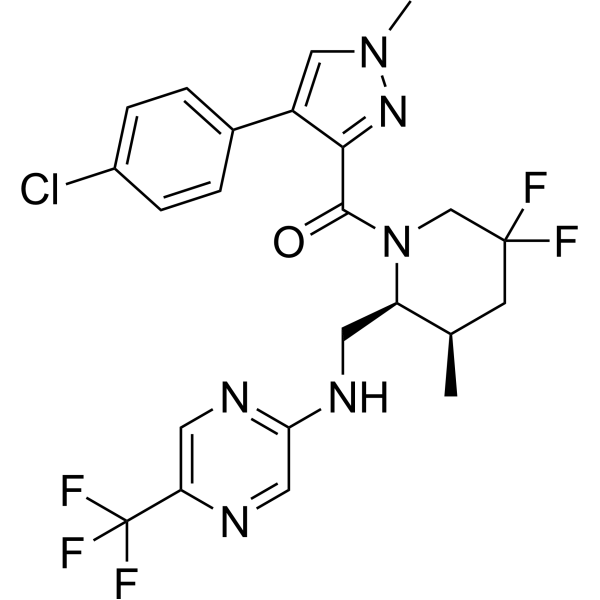
-
- HY-101795
-
|
|
TRP Channel
HPV
|
Infection
Neurological Disease
|
|
Larixyl acetate is a potent and selective TRPC6 inhibitor with IC50 values of 0.58 μM and 6.83 μM against hTRPC6-YFP and hTRPC3-YFP, respectively. Larixyl acetate prevents HPV and is effective in protecting against traumatic brain injury-induced systemic endothelial dysfunction .
|
-
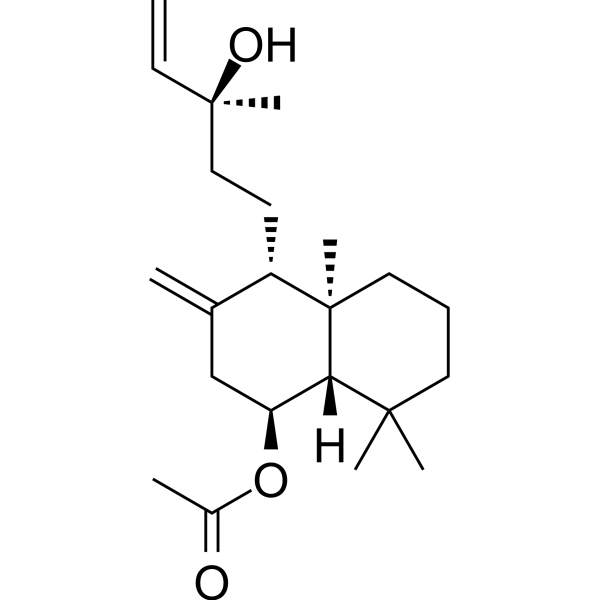
-
- HY-101364
-
|
|
mGluR
NF-κB
ERK
Akt
|
Cardiovascular Disease
Inflammation/Immunology
|
|
CHPG is a selective mGluR5 agonist, and attenuates SO2-induced oxidative stress and inflammation through TSG-6/NF-κB pathway in BV2 microglial cells . CHPG protects against traumatic brain injury (TBI) in vitro and in vivo by activation of the ERK and Akt signaling pathways .
|
-
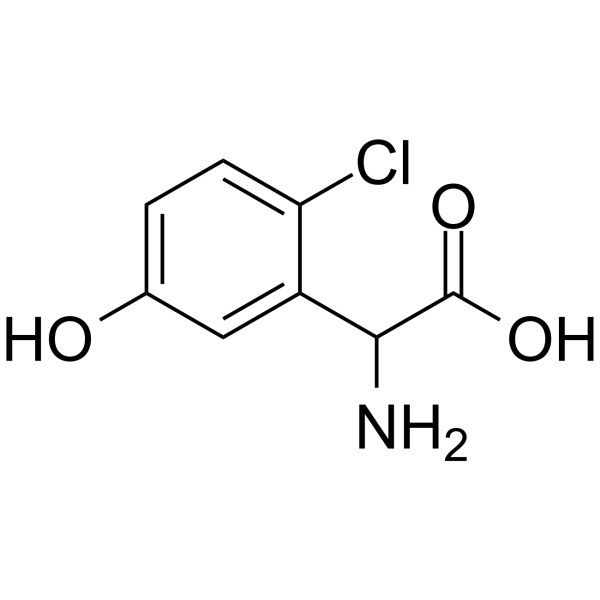
-
- HY-101364A
-
|
|
mGluR
NF-κB
ERK
Akt
|
Neurological Disease
Inflammation/Immunology
|
|
CHPG sodium salt is a selective mGluR5 agonist, and attenuates SO2-induced oxidative stress and inflammation through TSG-6/NF-κB pathway in BV2 microglial cells . CHPG sodium salt protects against traumatic brain injury (TBI) in vitro and in vivo by activation of the ERK and Akt signaling pathways. .
|
-

-
- HY-103320A
-
|
|
CaSR
|
Metabolic Disease
|
|
Calhex 231 hydrochloride is a potent negative allosteric modulator that blocks (IC50 = 0.39 μM) increases in [ 3H]inositol phosphates elicited by activating the human wild-type CaSR transiently Ca 2+-sensing receptor. Calhex 231 hydrochloride can be used in the study of traumatic hemorrhagic shock (THS) and diabetic cardiomyopathy (DCM) .
|
-

-
- HY-P2136F
-
|
|
Apoptosis
|
Neurological Disease
Inflammation/Immunology
Cancer
|
|
Biotin-COG1410 TFA is a biotin labled COG1410 (HY-P2136). COG1410 is an apolipoprotein E-derived peptide and an apoptosis inhibitor. COG1410 exerts neuroprotective and antiinflammatory effects in a murine model of traumatic brain injury (TBI). COG1410 can be used for the research of neurological disease .
|
-

-
- HY-103320
-
|
|
CaSR
|
Metabolic Disease
|
|
Calhex 231 is a potent negative allosteric modulator that blocks (IC50 = 0.39 μM) increases in [ 3H]inositol phosphates elicited by activating the human wild-type CaSR transiently Ca 2+-sensing receptor. Calhex 231 can be used in the study of traumatic hemorrhagic shock (THS) and diabetic cardiomyopathy (DCM) .
|
-

-
- HY-B0985A
-
|
|
|
|
|
Phenazopyridine is a competitive SARM1 inhibitor, with IC50 145 μM. Phenazopyridine is a TRPM8 antagonist. Phenazopyridine has a local anesthetic/analgesic effect. Phenazopyridine is used to relieve painful symptoms of conditions such as cystitis and urethritis. Phenazopyridine can promote neuronal differentiation and can also be used in the study of traumatic brain injury, peripheral neuropathy and neurodegenerative diseases .
|
-

-
- HY-B0205R
-
|
CV 11974 (Standard)
|
Angiotensin Receptor
PPAR
|
Cardiovascular Disease
Endocrinology
Cancer
|
|
Candesartan (Standard) is the analytical standard of Candesartan. This product is intended for research and analytical applications. Candesartan (CV 11974) is an orally active angiotensin II AT1-Receptor blocker and PPAR-γ agonist. Candesartan has potent and long-lasting antihypertensive effects. Candesartan can be used for the research of hypertension, chronic heart failure (CHF) and Traumatic brain injury (TBI) .
|
-
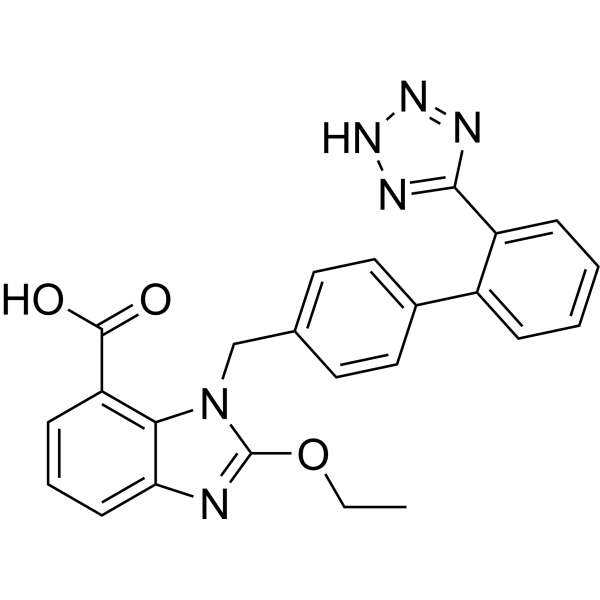
-
- HY-119243
-
|
|
mGluR
|
Neurological Disease
|
|
LY2794193 is a highly potent and selective mGlu3 receptor agonist (hmGlu3 Ki=0.927 nM,EC50=0.47 nM; hmGlu2 Ki=412 nM,EC50=47.5 nM) .
|
-

-
- HY-B0149
-
|
cyclocapron
|
IGF-1R
AMPK
MMP
Mitophagy
|
Cardiovascular Disease
Neurological Disease
Cancer
|
|
Tranexamic acid (cyclocapron), a cyclic analog of lysine, is an orally active antifibrinolytic agent. Tranexamic acid attenuates the effects of severe trauma, inhibits urokinase plasminogen activator and ameliorates dry wrinkles. Tranexamic acid can used for the research of hemostasis .
|
-
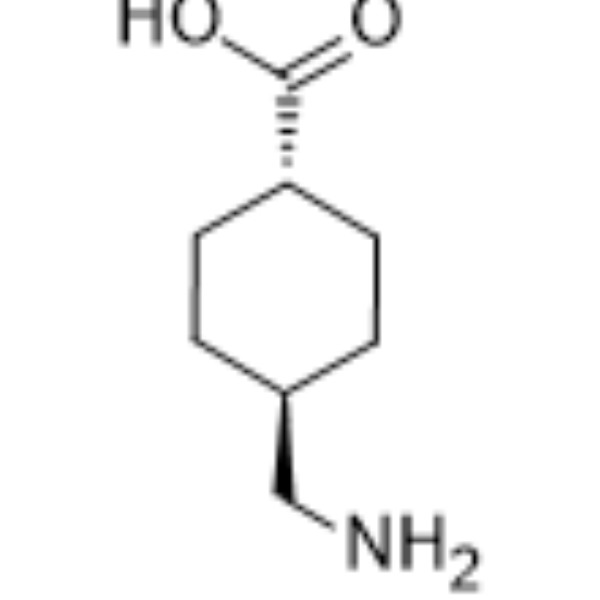
-
- HY-N0123
-
Aloin
Maximum Cited Publications
7 Publications Verification
Aloin-A; Barbaloin-A
|
Others
|
Cancer
|
|
Aloin (Aloin-A; Barbaloin-A) is a natural anti-tumor anthraquinone glycoside with iron chelating activity. Aloin induces the differentiation of MC3T3-E1 cells into osteoblasts through MAPK-mediated Wnt and Bmp signaling pathways. Alkaline phosphatase (ALP) is an early marker of osteoblast differentiation, and the activity of ALP is also enhanced by Aloin. Aloin also reduces brain edema, reduces blood-brain barrier disruption and improves cortical impact injuries. Aloin is used in research into osteoporosis and traumatic brain injury (TBI) .
|
-

-
- HY-100403
-
|
|
mGluR
|
Cancer
|
|
Ro 67-7476 is a potent positive allosteric modulator of mGluR1 and potentiates glutamate-induced calcium release in HEK293 cells expressing rat mGluR1a with an EC50 of 60.1 nM . Ro 67-7476 is a potent P-ERK1/2 agonist and activates ERK1/2 phosphorylation in the absence of exogenously added glutamate (EC50=163.3 nM) .
|
-
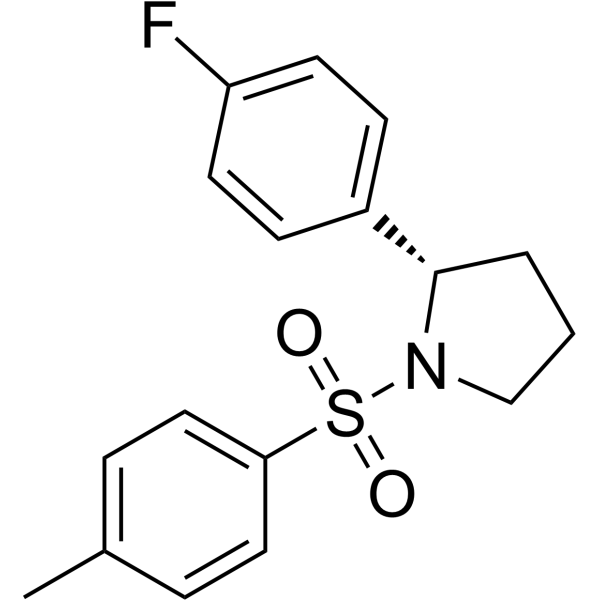
-
- HY-119744
-
|
|
Cannabinoid Receptor
|
Neurological Disease
|
|
BAY 38-7271 is selective and highly potent and cannabinoid CB1/CB2 receptor agonist, with Kis of 1.85 nM and 5.96 nM for recombinant human CB1 receptor and CB2 receptor, respectively. BAY 38-7271 has strong neuroprotective properties .
|
-
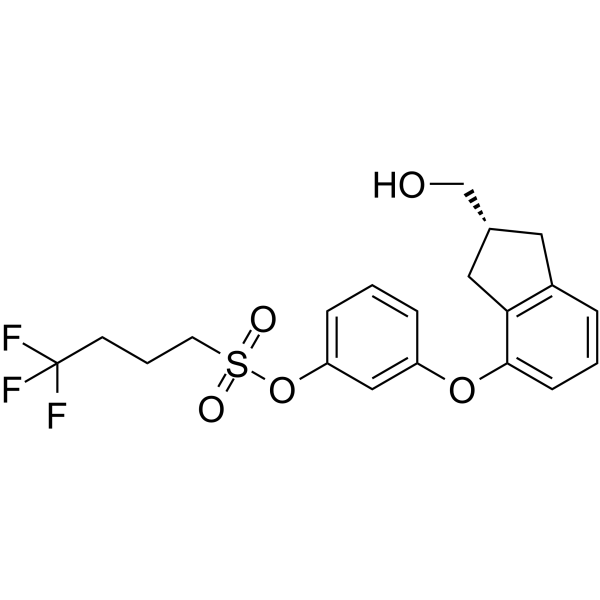
-
- HY-135046
-
|
|
Others
|
Neurological Disease
Inflammation/Immunology
Cancer
|
|
MTOB sodium is a potent C-terminal binding protein (CtBP) inhibitor. MTOB sodium attenuates repetitive head injury-elicited neurologic dysfunction and neuroinflammation via inhibition of the transactivation activity of CtBP1 and CtBP2. MTOB sodium antagonizes the transcriptional regulatory activity of CtBP1 and CtBP2 by eviction from their target promoters in breast cancer cell lines .
|
-
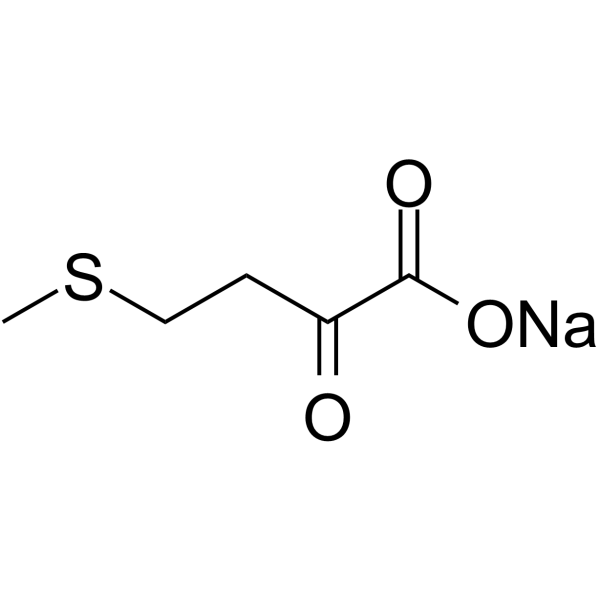
-
- HY-162020
-
-

-
- HY-15527
-
|
AC-5216; XBD-173
|
Others
|
Neurological Disease
Metabolic Disease
|
|
Emapunil (AC-5216), an orally active and selective TSPO (a mitochondrial benzodiazepine receptor) ligand, produces anti-anxiety and antidepressant-like effects in various animal models .
|
-
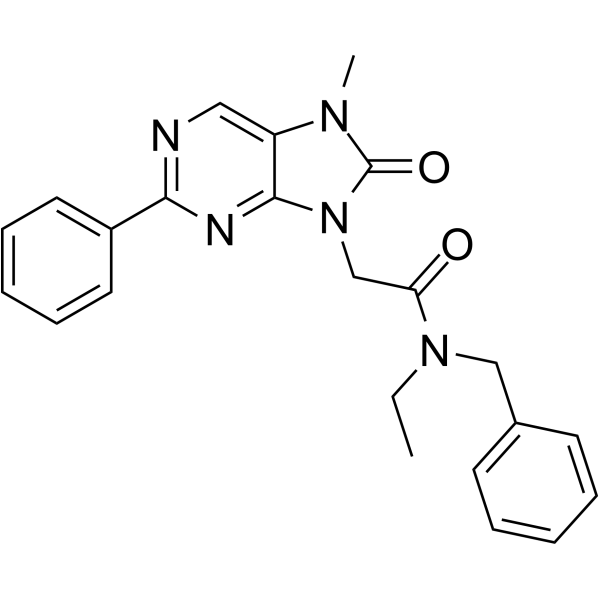
-
- HY-147352
-
|
|
iGluR
|
Neurological Disease
|
|
NMDA receptor potentiator-1 (Compound 1368) is a subunit selective NMDA receptor potentiator with IC50s of 4 μM and 5 μM against NR2C and NR2D expression, respectively .
|
-
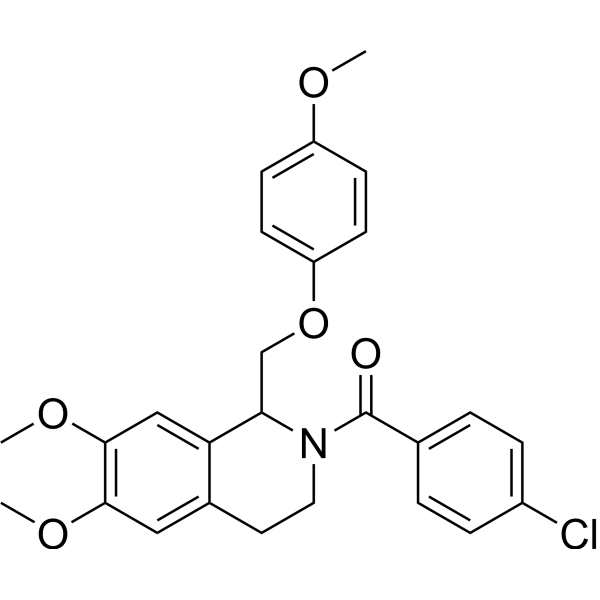
| Cat. No. |
Product Name |
Type |
-
- HY-P2325
-
|
|
Biochemical Assay Reagents
|
|
Exoenzyme C3, clostridium botulinum is a promising agent to inactivate RhoA in neurons due to preventing the detrimental effect of active Rho in the recovery of injured neuronal systems. Exoenzyme C3, clostridium botulinum is used for the study of post-traumatic neuro-regeneration .
|
| Cat. No. |
Product Name |
Target |
Research Area |
-
- HY-P2136
-
COG1410
1 Publications Verification
|
Apoptosis
|
Neurological Disease
Inflammation/Immunology
|
|
COG1410 is an apolipoprotein E-derived peptide and an apoptosis inhibitor. COG1410 exerts neuroprotective and antiinflammatory effects in a murine model of traumatic brain injury (TBI). COG1410 can be used for the research of neurological disease .
|
-
- HY-P2136F
-
|
|
Apoptosis
|
Neurological Disease
Inflammation/Immunology
Cancer
|
|
Biotin-COG1410 TFA is a biotin labled COG1410 (HY-P2136). COG1410 is an apolipoprotein E-derived peptide and an apoptosis inhibitor. COG1410 exerts neuroprotective and antiinflammatory effects in a murine model of traumatic brain injury (TBI). COG1410 can be used for the research of neurological disease .
|
-
- HY-P2325
-
|
|
Biochemical Assay Reagents
|
Neurological Disease
|
|
Exoenzyme C3, clostridium botulinum is a promising agent to inactivate RhoA in neurons due to preventing the detrimental effect of active Rho in the recovery of injured neuronal systems. Exoenzyme C3, clostridium botulinum is used for the study of post-traumatic neuro-regeneration .
|
-
- HY-P1243
-
|
|
Peptides
|
Neurological Disease
|
|
C3bot(154-182) is a C3 peptide enhances recovery from spinal cord injury by improving regenerative growth of descending fiber tracts. C3bot(154-182) represents a promising tool to foster axonal protection and/or repair, as well as functional recovery after traumatic CNS injury .
|
-
- HY-P1243A
-
|
|
Peptides
|
Neurological Disease
|
|
C3bot(154-182) TFA is a C3 peptide enhances recovery from spinal cord injury by improving regenerative growth of descending fiber tracts. C3bot(154-182) TFA represents a promising tool to foster axonal protection and/or repair, as well as functional recovery after traumatic CNS injury .
|
-
- HY-P1242A
-
|
|
Peptides
|
Inflammation/Immunology
|
|
NEP(1-40) TFA is a Nogo-66 receptor (NgR) antagonist peptide, reversing the injury-induced shift in distribution of microglia morphologies by limiting myelin-based inhibition .
|
-
- HY-P1242
-
|
|
Peptides
|
Inflammation/Immunology
|
|
NEP(1-40) is a Nogo-66 receptor (NgR) antagonist peptide, reversing the injury-induced shift in distribution of microglia morphologies by limiting myelin-based inhibition .
|
| Cat. No. |
Product Name |
Category |
Target |
Chemical Structure |
Your information is safe with us. * Required Fields.
Inquiry Information
- Product Name:
- Cat. No.:
- Quantity:
- MCE Japan Authorized Agent:













































